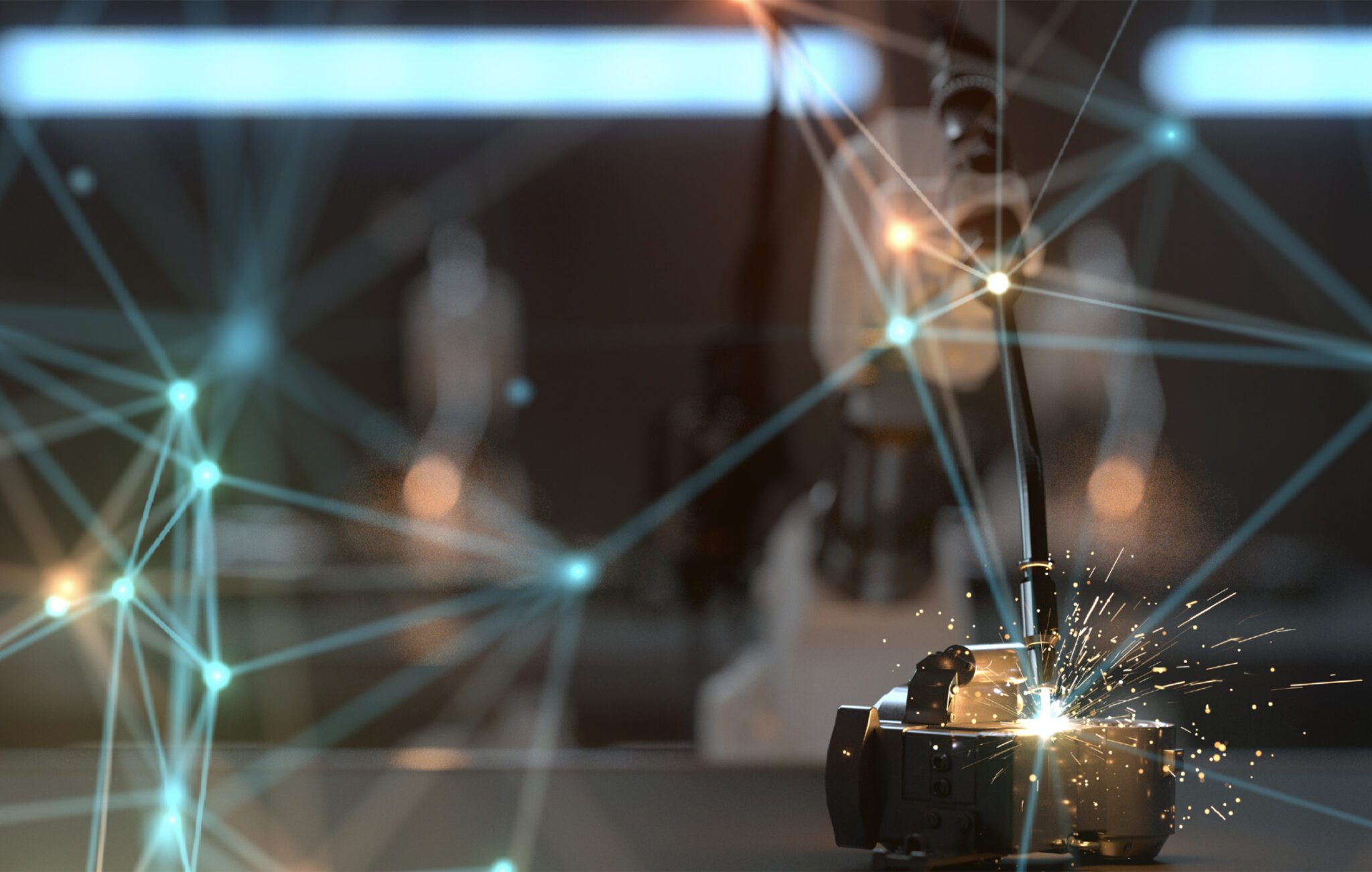Industry 4.0: Welcome to the Fourth Industrial Revolution
Inexpensive sensors, fast networks, industrial globalization, and software advances including AI and machine learning have created an environment where factories, supply chains, workers, consumers, and investors can be connected everywhere, all the time.
Industry 4.0, propelled by the Industrial Internet of Things (IIoT), is transforming business by embracing connectivity. IIoT connects the full scope of business operations using internet technology to link machines, workers, and corporate systems with a goal of accelerating operations, improving quality, and boosting financial performance. New technologies and components, including affordable processors and sensors that provide real-time access to information, along with advancements in network connectivity and artificial intelligence, are increasing capabilities and reducing costs.
Three challenges related to increased connectivity stand between today’s business architectures and the Industry 4.0 future. These challenges are defeating cyberattacks and security breaches, integrating global supply chains, and fully implementing the capabilities of high-performance networks.
Cybersecurity
Malicious actors are already looking for ways to hack Industry 4.0 operations, and a series of early attacks on manufacturing and infrastructure demonstrate the scope of risks connected networks face. Security practices designed for minimally networked systems rely on isolation and local access controls. Those practices are fundamentally inadequate when industrial systems are connected through industrial connectivity protocols such as SCADA (Supervisory Control and Data Acquisition) that gather and analyze real-time data to monitor and control the activities of equipment. Without constant surveillance and network security practices that constantly evolve to stay ahead of potential attacks, Industry 4.0 solutions can open networks to potential interference.
Building security into Industry 4.0 solutions is essential to address the vulnerabilities created by increased connectivity. Because suppliers and partners are closely integrated within an Industry 4.0 solution, IoT-related vendors (hardware and software vendors, service providers, consultants, and others) must be integrated into security plans. Most Industry 4.0 transformations include actions to align with U.S. or international cybersecurity standards such as NIST SP 800-53 or ISO 27001.

The global IIoT market reached $322 billion in 2022 and is estimated to grow at 20-25% annually through 2030. Read more in Fischer Connectors’ trend paper, The Connectivity Challenge – Connecting Industry 4.0.
Supply chain integration
Basic industrial control systems have evolved from mechanical governors (Industry 1.0) to sensor-driven telemetry and feedback loops (Industry 3.0). Achieving the full benefit of Industry 4.0 requires an additional step – from telemetry to full integration of supply chain performance data, including telemetry with enterprise resource planning (ERP) and other corporate management systems.
This ‘step after SCADA’ requires planning because the amount of available telemetry data allows almost any aspect of factory performance or environmental conditions to be integrated. Direct connection with supplier systems can create a fully integrated supply chain to improve inventory planning, identify bottlenecks, and reduce operating costs. Correctly implemented, integrating the supply chain and pushing telemetry data into enterprise systems can offer important advantages, including:
- Visibility into end-to-end business processes and their share in the cost structure. Integrated supplier data and telemetry helps managers see dependencies and potential areas for performance improvement.
- Enhanced analysis and forecasts. Combining telemetry with ERP data supports joint analysis across the full value chain to identify interrelations and predict how processes will perform under potential future conditions.
- Systematic cost optimization. Integration can contribute to improved understanding of cost drivers, supporting initiatives to reduce costs while achieving performance improvements.
- Connected procurement is possible when supplier networks exchange data with enterprise systems, allowing predictive analytics to guide or automate decisions about the size and timing of purchases.
- Connected inventory management relies on autonomous robots and material-handling systems to bring the right articles to shipment docks or factory locations based on demand signals from the ERP.

Fischer Connectors’ new Single Pair Ethernet (SPE) and USB 3.2 products enhance IIoT connectivity (from left to right): Fischer Core Series in size 102 with SPE 1 Gbit/s; Fischer UltiMate Series in size 07 with SPE 1 Gbit/s; Fischer MiniMax Series in size 08 with USB 3.2 Gen 1 for 5 Gbit/s, Gen 2 for 10 Gbit/s; Fischer MiniMax Series in size 10 with power and USB 3.2 Gen 1 for 5 Gbit/s, Gen 2 for 10 Gbit/s.
High-performance networks
Early SCADA and industrial control systems could operate efficiently on rudimentary networks because they relied on intermittent transmission of small elements of data such as changes in temperature, on/off status, and other low-content packets. Industry 4.0 integrates advanced sensors and processors to move more complex data across IIoT networks, such as worker biometrics, environmental conditions, and surveillance camera video. Augmented reality (AR), AI, and machine learning present even more opportunities, if networks are equipped with broad-bandwidth, high-speed connections.
Standard Ethernet connectivity delivers only 10 Megabits per second. Industrial Ethernet and 5G cellular networks allow speeds up to 10 and 20 Gigabits per second, respectively, facilitating Industry 4.0 applications such as predictive maintenance, robotics, real-time supply chain visibility from production to inventory management, and AI- and AR-assisted solutions.
The Internet of Things infrastructure is the backbone of the connected global enterprise in Industry 4.0. Low-performance legacy networks, sensors, and even physical connections must be transformed to deliver Industry 4.0 benefits. In fact, the underlying architecture of an Industry 4.0 network is fundamentally different from earlier approaches.
Fischer Connectors’ Single Pair Ethernet (SPE) solutions from the Fischer Core Series and Fischer UltiMate Series allow for 1 Gbit/s data transfer per IEEE 802.3bp – 1000Base-T1. Exceptionally rugged by any market standards, they outperform other suppliers’ SPE solutions in terms of security, durability, as well as environmental and mechanical performance. Fischer SPE is compliant with MIL-STD norms (through Fischer UltiMate) and offers 10,000 mating cycles, three locking mechanisms (push-pull, screw, quick-release), IP68/ IP69 ratings and hermetic sealing. SPE is also featured in the ultra-miniature Fischer MiniMax connector in ‘size 06’ (Ø 10 mm receptacle).
The elements of Industry 4.0 infrastructure
An edge/cloud approach to designing an Industry 4.0 network involves four key elements:
The Edge Element includes the physical sensors and devices to capture information. The Network Element transports this data from the Edge to the third element – a Cloud Infrastructure where the data can be stored and analyzed. The fourth element, the User Interface, enables users of the infrastructure to apply data to optimize the enterprise and achieve the real benefits of the fourth Industrial Revolution and the emerging Internet of Things.
To learn more about Industrial IoT solutions, visit Fischer Connectors.
Like this article? Check out our other Ethernet and Industry 4.0 articles, our Industrial Market Page, and our 2023 and 2022 Article Archives.
Subscribe to our weekly e-newsletters, follow us on LinkedIn, Twitter, and Facebook, and check out our eBook archives for more applicable, expert-informed connectivity content.
By Fischer Connectors





